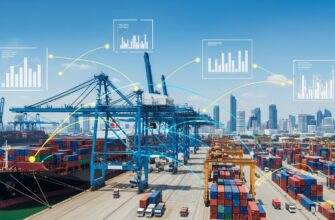While US companies debate China strategies, a more immediate opportunity has emerged next door. Southeast Asia’s free trade architecture now offers duty-free access to 670 million consumers—but only for companies sophisticated enough to navigate its rules.
The phone in your pocket likely contains components from seven different countries, assembled in China, and designed in California. But here’s what most American executives don’t realize: that same device could be manufactured across Southeast Asia and sold throughout the region without paying a single dollar in import duties.
This isn’t theoretical. Samsung, Unilever, and Ford have already restructured their Asian operations around this reality. They’re leveraging the ASEAN Free Trade Area (AFTA) to build supply chains that are simultaneously more resilient than China-dependent models and more profitable than traditional export strategies.
The opportunity is massive and immediate. Foreign direct investment into ASEAN hit $235 billion in 2024—exceeding flows into China for the first time in decades. Yet most American companies remain focused on yesterday’s playbook while their competitors capture tomorrow’s growth.
What Makes ASEAN Different
ASEAN has achieved something unique in modern trade: deep economic integration without sacrificing business agility. Unlike other trading blocs that require years of regulatory harmonization, ASEAN’s approach centers on practical problem-solving.
Take customs clearance. A typical cross-border shipment in Europe or Latin America involves days of documentation and multiple agency approvals. In ASEAN, the same process happens electronically in hours. The ASEAN Single Window processed over 50 million trade documents in 2024, creating the world’s most efficient cross-border documentation system.
The business impact is immediate. Procter & Gamble reduced its regional logistics costs by 23% after reorganizing around ASEAN’s digital infrastructure. The company now treats the ten ASEAN countries as a single market for planning purposes while maintaining local flexibility for execution.
This efficiency stems from ASEAN’s unique approach to integration. Rather than imposing uniform regulations, member countries compete to offer the most business-friendly environment while maintaining common standards. The result is a market that behaves like a single economy but adapts like ten separate ones.
The 40% Rule That Changes Everything
At the heart of ASEAN’s trade benefits lies a simple requirement: 40% of a product’s value must be added within the region to qualify for duty-free treatment. This threshold initially appears restrictive, but sophisticated companies use it as a competitive moat.
Here’s how it works in practice. A Malaysian factory produces air conditioners for regional distribution. The compressor comes from Japan (35% of total cost), but the housing, electronics, assembly, and packaging all happen within ASEAN (65% of cost). The finished product qualifies for zero duties when exported to Indonesia, Thailand, or any other ASEAN market.
The strategic implications multiply when you understand cumulation—the rule that treats inputs from any ASEAN country as “domestic.” A smartphone assembled in Vietnam can contain Malaysian semiconductors, Thai plastics, and Indonesian metals, all counting toward the 40% threshold.
Ford leveraged this principle for its new electric vehicle strategy. The company sources battery components across three ASEAN countries, assembles them in Thailand, and distributes duty-free throughout the region. This approach allows Ford to compete with Chinese manufacturers on cost while maintaining supply chain flexibility that purely domestic production cannot match.
The Digital Advantage
ASEAN’s digital trade infrastructure represents the future of international commerce. Since 2019, all ten countries have operated electronic certificates of origin through a unified system. A manufacturer in one country can ship to another with digital documentation that automatically clears customs.
This matters more than efficiency statistics suggest. Companies operating within ASEAN’s digital framework gain experience with systems likely to become global standards. As the region expands its digital partnerships—current discussions include integration with Japan and South Korea—early adopters will enjoy first-mover advantages.
The practical benefits are immediate. Intel reduced its regional shipping times by 35% after implementing ASEAN’s electronic documentation system. The company can now deliver semiconductors from its Malaysian facilities to assembly plants across the region in days rather than weeks.
Strategic Playbook for American Companies
Success in ASEAN requires thinking beyond traditional market entry strategies. The most effective approach involves three key principles:
Design for the region, not individual countries. Companies that treat ASEAN as ten separate markets miss the integration benefits. Those that design regional strategies from the start maximize cumulation advantages and achieve better returns on investment.
Invest in regulatory expertise early. ASEAN’s rules reward companies that understand them deeply. Firms that master rules of origin, digital documentation, and cumulation principles create sustainable competitive advantages over those that don’t.
Build local partnerships strategically. The most successful American companies in ASEAN combine their global capabilities with deep local relationships. These partnerships provide market knowledge, regulatory navigation, and operational flexibility that pure subsidiaries cannot match.
Consider how 3M approached the region. Rather than establishing country-specific operations, the company built an integrated manufacturing and distribution network spanning five ASEAN countries. This design allows 3M to serve the entire region from optimal locations while qualifying for duty-free treatment everywhere.
The Competitive Reality
American companies face a stark choice in Southeast Asia: adapt to ASEAN’s integration model or cede the market to competitors who do. European and Asian companies increasingly structure their regional operations around AFTA benefits, creating cost advantages that compound over time.
The numbers illustrate the stakes. A company paying standard import duties of 10-30% across ASEAN markets faces structural disadvantages against competitors operating duty-free. These cost differences multiply as regional trade volumes grow—the World Bank projects 4.0% annual growth for East Asia Pacific through 2025, nearly double the global average.
More importantly, companies outside ASEAN’s integration framework miss the agility benefits. Regional manufacturers can adjust production and sourcing in response to market changes, trade disruptions, or supply chain problems. Companies dependent on single-country operations or external supply chains lack this flexibility.
Implementation Realities
Converting ASEAN theory into business results requires systematic execution. Companies must conduct supply chain audits to identify cumulation opportunities, implement digital documentation systems, and train teams on regulatory requirements.
The learning curve is real but manageable. Most companies achieve basic AFTA compliance within six months of focused effort. Sophisticated optimization takes longer—typically 12-18 months to fully restructure operations around cumulation benefits.
The investment pays off quickly. Companies typically recover implementation costs within the first year through duty savings alone. Additional benefits from operational efficiency and market access follow over time.
Looking Forward
ASEAN’s trade architecture continues evolving. The region is developing blockchain-based supply chain verification, artificial intelligence-powered customs processing, and expanded digital integration with major trading partners. Companies that engage seriously with these developments will be best positioned for whatever emerges next.
The strategic message for American executives is clear: ASEAN represents more than a China hedge or emerging market opportunity. It’s a laboratory for advanced trade integration that’s producing immediate business benefits for companies sophisticated enough to access them.
The question isn’t whether ASEAN’s integration model will spread—it’s whether American companies will lead or follow as it does. The companies making that choice today will determine their competitive position for the next decade.
Essential Implementation Resources
Executives ready to engage with ASEAN markets should start with practical resources. The ASEAN Single Window portal provides comprehensive guidance on digital trade procedures. The ASEAN Trade in Goods Agreement contains detailed regulatory frameworks. Current market intelligence is available through the UNCTAD Investment Database and World Bank regional analysis.



